In March this year, I went through what is my fourth book launch, when Brigids Gate Press released Shadow of the Hidden. With my previous three books coming during the Covid pandemic, this felt like the first time I was able to try some things to help it find its readership. Some of these strategies worked well. Some less so. In this article, I’ll talk a little about the approaches and tools I used, and the effect on me and my creativity of all that’s involved in launching a book.
So that this write-up is not one-sided, I’ve enlisted the help of two fantastic authors who’ve also recently put new work out into the horror space: Brennan LaFaro, and Catherine McCarthy.

LaFaro’s latest, The Demon of Devil’s Cavern is a horror western set in the same universe as his 2022 hit release, Noose, and is released by Dark Lit Press. McCarthy’s latest novella, The House at the End of Lacelean Streetis a work of psychological horror with cosmic elements from Dark Matter INK. Both of these books should be on your TBR if they’re not already, so go off and add them.
I’ll wait.
Okay, now that’s been taken care of, without further ado, here’s what we’ve learned:
Blurbs
Kev: Blurbs are an important part of the process, partly because they allow you to ascribe someone else’s words as validation of your work, but also because they, theoretically, give you access to someone else’s audience. The downside of blurbs is that it takes courage to reach out to people with huge audiences, especially when you’re still in the (hopefully) up and coming author category. I was braver this time than I have been before and some people who are better known than me agreed to read my work (and enjoyed it enough to blurb, too!), but I know that next time I need to push myself harder.
Brennan: Maybe the best advice I’ve ever gotten regarding blurbs is that the worst someone can say is no. That said, I like to ask in as professional a manner as possible, which includes spending time scouring author websites and social media to see if the person in question is open to blurbs and has a preferred method of approach. Unless they have another way, I like to send requests by email with a pitch and a personalized reason for what that person’s work means to me and why I think they might enjoy the book. I always make sure to conclude by ensuring them I know how busy that author life can get, never mind day jobs, family, and all the other stuff life likes to throw at you, and if they are unable to commit, I completely understand. It can be a daunting task, and I usually hope to collect around four blurbs, and shoot a little higher, knowing some people will be unable, and others may be unable to commit to a certain timeline.
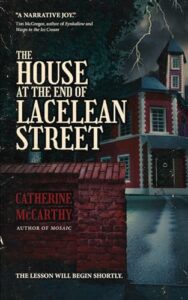 Catherine: I have to admit, I am appallingly British when it comes to asking for blurbs. With The House at the End of Lacelean Street I failed yet again to muster the courage to ask anyone other than my good friend, Tim McGregor. I guess I overthink it and assume everyone’s far too busy to bother to read my book and put together a snazzy comment that might draw in readers. What if they say no? What if they agree but secretly bemoan the fact that they’ve agreed? I think part of it stems from the fact that I personally take very little notice of blurbs and prefer to read around reviews and form my own judgement, but as the old school report often says: ‘Must try harder!’
Catherine: I have to admit, I am appallingly British when it comes to asking for blurbs. With The House at the End of Lacelean Street I failed yet again to muster the courage to ask anyone other than my good friend, Tim McGregor. I guess I overthink it and assume everyone’s far too busy to bother to read my book and put together a snazzy comment that might draw in readers. What if they say no? What if they agree but secretly bemoan the fact that they’ve agreed? I think part of it stems from the fact that I personally take very little notice of blurbs and prefer to read around reviews and form my own judgement, but as the old school report often says: ‘Must try harder!’
Pre-orders
Brennan: So many of my recent releases have been part of a series, either Slattery Falls or Buzzard’s Edge. It’s a double-edged sword, as they have a built-in audience to an extent, but you also may be trying to encourage people to read Book 2 when they were previously unaware of Book 1. In this instance, temporarily lowering the price of other books in the series leading up to release can garner some pre-orders as well as exposing new readers to your other work. Publishers will say that pre-orders are the lifeblood of an indie author, but dropping to your knees and begging for them can feel desperate. I find that posting a few times a week leading up to release, maybe up to 5-6 times the week before, and sharing different graphics, early review quotes, and not just the same old, draws a consistent amount of engagement. In my personal experience, the most buzz comes when the book is announced and the days following release. If you, or your publisher, are able to include pre-order links with book announcements and cover reveals, this typically bodes well. If not, hit it hard on release week.
Kev: That point about announcements coming with pre-order links rings true. That or cover reveals. I think the best way to generate pre-orders is to harness that energy which comes with the original announcement, so it’s always a big plus to have a pre-order ready to go when the announcement goes out into the world. My publisher for Shadow, like many others, takes a low-price pre-order approach, to try and encourage more readers from the off, and to get early reviews on the board to game the algorithm. This, of course, means that both the press and the author see less in the way of royalties from the pre-order push, but I read somewhere that an indie book release hits its peak around eighteen months in, so I think it’s worth it on balance.
Catherine: With The House at the End of Lacelean Street I pushed as hard as I could to draw people’s attention to its pre-order status. Again though, my approach is subtle as opposed to ‘in your face.’ As to how successful it was I really can’t say as I don’t have those figures off the publisher to hand. Some people say pre-orders are important because they help raise your place in the charts on release day, while others say they really don’t matter very much. I’m not sure who is right to be honest.
Promotional tools and services
Kev: This time around, I went big on promotions. In the run up to release, while Shadow was still available for a promotional price, I bought a promo through Bargain Booksy and a ‘New Releases for Less’ deal from Bookbub. I have to say, Bargain Booksy was a total bust and, having used it before with other books, this is a trend, and I will likely stay away from this avenue for marketing in future. It’s inexpensive, so I wanted to give it a try, but it really didn’t work. The Book Bub ‘New Releases for Less’ did, I think, gain me a fair chunk of clicks and purchases, especially from readers who didn’t know my work beforehand. This particular marketing tool does cost a lot, though, so you have to be prepared and able to lose that kind of money ($260 in the case of horror) in order to try it. With my next release, I may pay for a book blogger book tour and see if that helps.
Catherine: A couple of years ago (maybe four or five) I really do think BookBub and similar deals made a big difference. Perhaps I’m wrong, but lately I’ve been following discussions on this subject via social media and from what I can gather people are not seeing the returns for their investment that they used to. The market is saturated, and it’s become far more of a gamble. I guess it comes down to how much of a risk you’re willing to take and whether or not you can afford to take that risk financially.
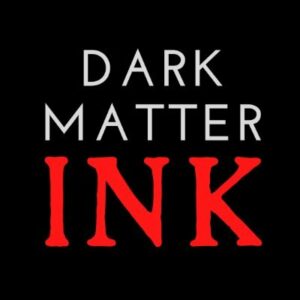 Dark Matter Ink, who published The House at the End of Lacelean Street, made 25 copies available on BookSirens. I posted to X and every single copy was snapped up within a couple of hours. What I don’t know though is how much this did/will affect sales going forward. How does one even begin to analyse such a thing?
Dark Matter Ink, who published The House at the End of Lacelean Street, made 25 copies available on BookSirens. I posted to X and every single copy was snapped up within a couple of hours. What I don’t know though is how much this did/will affect sales going forward. How does one even begin to analyse such a thing?
I believe Netgalley is far more expensive, and I have to say when my other books (A Moonlit Path of Madness and The Wolf and the Favour) were added to Netgalley by my publishers I don’t think the investment was worthwhile. It seems to me that unless you’re already a big established name, someone who will have a big audience ready to snap up your book, Netgalley does not draw in the crowd. Others might disagree, but that has been my personal experience.
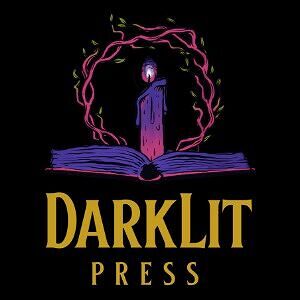 Brennan: I’ve been lucky to release a few books with DarkLit Press now, who do a tremendous job promoting books. This includes efforts to get titles reviewed by Publisher’s Weekly, BookList, and more—not something overly common among indie releases. Keeping a list of people to send books to, both on Instagram and TikTok is a must, as well as tracking which reviewers require physical versus digital ARCs for their presentation.
Brennan: I’ve been lucky to release a few books with DarkLit Press now, who do a tremendous job promoting books. This includes efforts to get titles reviewed by Publisher’s Weekly, BookList, and more—not something overly common among indie releases. Keeping a list of people to send books to, both on Instagram and TikTok is a must, as well as tracking which reviewers require physical versus digital ARCs for their presentation.
When you’re on your own and unsure of where to start, the Books of Horror group on Facebook is an excellent resource. It’s nearly 50,000 members strong, all of whom love to talk horror fiction, and includes a sub-group called “Freview” where authors can offer up copies for review to any interested parties. With so many members, your readers are out there no matter what sub-genre you specialize in.
Online and Face to Face Events and Articles, Interviews, etc
Catherine: As far as podcast appearances, written interviews and articles go I’m far more proactive than I am at asking for blurbs. That’s because I’m giving up my time rather than asking others to do likewise. For The House at the End of Lacelean Street I said yes to every podcaster and interviewer who came my way, and was happy to do so. There are many excellent hosts out there who are willing to interview authors and who do so freely, and I’ve enjoyed talking with them.
That said, you have to consider the length of time you’re asking potential readers to sacrifice to listen to you chatting on a podcast, or reading an article or interview you’ve written, so again, I don’t know how successful such appearances are in terms of sales. What I do know is it’s a great way of widening your circle of acquaintances, making new friends within the community, and offering mutual support. I remember being extremely nervous for my first podcast appearance, but now I’m far less so. Therefore it’s a good confidence builder, too.
 Brennan: As a former Podcast host, I can vouch for the value in this medium. Print interviews are wonderful, and I participate in them whenever possible, but a face-to-face conversation allows listeners to get to know authors, their work, and how the sausage gets made, if that’s something of interest.
Brennan: As a former Podcast host, I can vouch for the value in this medium. Print interviews are wonderful, and I participate in them whenever possible, but a face-to-face conversation allows listeners to get to know authors, their work, and how the sausage gets made, if that’s something of interest.
Another thing I’ve learned from hosting a podcast is how much listeners enjoy hearing their favorite authors gush about other books and make recommendations. This taught me that, within reason and within time constraints, authors should take advantage of getting their words out there any way possible. Talking about your favorite books of the year, favorite recent movies, overused tropes in the genre, or any other related subject is an opportunity to connect with readers.
Kev: Echoing what Brennan says here, I’ve found with my author newsletter, for example, that about 90% of the replies I get from readers are related to movies, albums or books I’ve recommended, which tells me that more often than not, it’s your authentic self that readers are mostly coming to interviews, articles, and newsletters for.
With the launch of Shadow, I spoke to This is Horror for the second time, which was a great experience and really helps get your voice (and face, nowadays, thanks to YouTube), but beyond that, I’ve chosen to only go on other podcasts and YouTube shows which I’ve never been on before. My thinking here is that there will always be a part of a show’s audience who have little to no idea who you are, so by appearing on more shows, you are always being introduced to at least some new audience members.
On the face-to-face side, I went to my first face to face convention earlier this year and I can’t really overstate the value of this experience. Just being able to chat with other authors and readers is a hugely game-changing thing, and I’m sure I reached people there, both in terms of selling books and networking, that I wouldn’t have been able to via online-only methods. I’m looking forward to attending another such event in Birmingham, UK, this August, which our UK readers should try to get to, if they can.
Social Media
Brennan: Necessary evil. I’ve met people on social media who I now consider close friends, connected with countless readers and writers, and allowed a website to stress me out so badly I had to turn my phone off and put it in another room.
As with most things, the two keys are moderation and professionalism. I have daily time that is set aside for writing. Assuming I consider that more important than talking about writing (and I like to think I do), why wouldn’t I do the same for announcements, updates, and sharing exciting news items from peers? As it pertains to professionalism, it’s important to keep in mind that anything you put there is forever. Go ahead and delete that rant, someone already screenshotted it. Publishers, agents, editors, reviewers, established writers, newer writers figuring out the scene. They all see how you conduct yourself, how you treat others, how you respond to fraught situations, and like it or not, will file that information away when considering whether to work with you in the future or check out your books.
 Catherine: This is a biggie for me as I’ve recently concluded I’m suffering from social media burnout. Trying to keep up with posts and responses on several platforms is draining and results in so much time wasting that there’s little time or energy left to dedicate to the art of writing. I don’t have a TikTok account (nor do I ever intend to), but I do have X, Facebook, a Facebook author’s page, Instagram, and BlueSky, as well as Substack where I write my newsletters. It’s too much. As Bilbo famously tells Gandalf in The Fellowship of the Ring: “I feel thin, sort of stretched, like butter scraped over too much bread.”
Catherine: This is a biggie for me as I’ve recently concluded I’m suffering from social media burnout. Trying to keep up with posts and responses on several platforms is draining and results in so much time wasting that there’s little time or energy left to dedicate to the art of writing. I don’t have a TikTok account (nor do I ever intend to), but I do have X, Facebook, a Facebook author’s page, Instagram, and BlueSky, as well as Substack where I write my newsletters. It’s too much. As Bilbo famously tells Gandalf in The Fellowship of the Ring: “I feel thin, sort of stretched, like butter scraped over too much bread.”
This is precisely how I felt recently, so I decided something had to give. I want to spend time doing the things I love. I want to spend time with my husband. I want to spend time actually writing instead of scrolling and responding to notifications. I now use Facebook mainly for keeping up with friends and family, though I do occasionally post about my books. I’ve pretty much let Bluesky drop, as for me it was almost a dead platform. I post occasionally to Instagram, though not as often as I should. X (Twitter) has always been the place where I’ve received the most engagement, and therefore I’m still more active there than on other platforms. That said, I’ve cut the time I spend there by at least half recently and will often leave my phone in another room when I’m working to avoid distraction.
As for Substack, my newsletter seems to do okay. I write a post approximately once every three weeks because I hate being bombarded with constant emails from sites I subscribe to and therefore do not want to inflict the same on others. When I do post, it’s because I have something valid to say, and when I’m compiling a newsletter I consider the kind of thing I enjoy reading about from others as well as the kind of thing I don’t enjoy or don’t have time for. That would be my one tip, really – whatever you do, be authentic and think about whether or not it would be something people might be interested in hearing about. For example, I’ve been told people enjoy hearing about my exploits through West Wales, my rummages around derelict churchyards and my hikes along the coastpath, so I try to include that kind of thing when I can. I’ve also been told on several occasions that people enjoy hearing me read excerpts aloud, and with Substack it’s possible to do that easily. I think it’s my sing-song Welsh accent that draws in the crowd! (LOL)
Kev: As Catherine and Brennan have mentioned, I do think social media is a necessary evil, especially for indie authors. But also as they’ve said, I feel like I’ve made a host of valuable, strong connections via social media and have real friends who are dear to me and who I certainly wouldn’t have been able to foster my relationships with were it not for Twitter, and so forth. That said, as the recent Twitter/X hi-jinks with its new owner have confirmed, we can’t stay too wedded to our social networks, lest they meltdown and disappear overnight, so for that reason, I’ve been putting a fair amount of time and effort into my monthly newsletter.
As I mentioned in an earlier section of this article, I think being authentic is really important, and nowhere more so than with your online interactions. It feels to me like people can tell when you’re simply presenting a front, and this is the reason I ultimately decided not to continue using TikTok. There are some people who are creative in a variety of ways, but making interesting videos on TikTok is not an area in which I’m blessed. Because of that, my videos came across as stiff and awkward, and I don’t think would have really gained any traction anyway. I’ll still do the odd video on Instagram, etc, but it’s not demanded of you in the same way and I feel far more comfortable as a result.
The energy that goes into a book launch
Kev: I actually thought about this point after an exchange with Catherine on Twitter, after our respective launches. As writers, we tend to be quite insular folk, doing most of our work at the desk, alone. Even though all three of us have or have had careers as teachers, I personally find things like writing articles on topics related to a new release, as well as speaking about my books on podcasts to drain my energy immensely, even if they are a lot of fun to do. I ended up being very self-critical about not writing more during my travel to and from Authorcon in April, and again when it took some time to get back to my regular productivity levels once home. Maybe this is an age thing, too, but I’m still trying to find a balance between pushing myself to stay motivated to create, while also listening to my mind and body when I’m feeling burned out.
Catherine: Gosh, as Kev has already said, the energy that goes into a book launch is immense. Honestly, unless you’ve experienced it you cannot imagine the adrenaline it takes to stay on top of things. It’s like spinning plates, it’s a roller-coaster ride of ups and downs, highs and lows, and about a week post launch you will likely hit a wall. A high wall, made of the strongest bricks and stickiest cement you can imagine.
In 2023, in addition to having short stories published in anthologies and magazines, I had two novels and a novella published, all with different publishers. Then, in April this year, The House at the End of Lacelean Street was published. In all honesty it was too much, and I’m currently feeling drained and exhausted. I say this with candidness and as a warning to those of you who might be considering doing the same. I didn’t plan it that way. In fact, one of the novels had sat on my PC for three years, but that’s just the way it worked out. Never again though. In future I don’t intend to publish more often than once a year, and might not even achieve that.
As I write this The House at the End of Lacelean Street has been out for exactly one month, and I’m still exhausted by it all. I’m trying to get my head around a novel which currently stands at 55k words, but I’ll admit I’m struggling. I shall try not to stress over it because I know for a fact that stress will make matters worse. It’ll happen when the time’s right, I tell myself on a daily basis.
Brennan: The collective view here seems to be, “It’s a lot”, and I’ll go ahead and add my voice to that chorus. Trying to maintain a writing schedule, balance life, and add interviews, zoom meetings, publisher updates, and an obnoxious amount of “buy my book” posts to the mix takes a lot out of you. Maybe I’m only speaking for me, though I suspect not, but we spend months and months writing, revising, editing, worrying about, and molding a book into something we’re finally ready to share. All that work should make it easy to summon a confident attitude and a cocksure way of telling potential readers your words are worth their time. Yet, that’s rarely the case, and wearing that mask, even just in a virtual sense takes a lot out of a person.
It all comes down to what you want for your work. I may feel terrifically uncomfortable telling a person that out of the millions of books out there, mine is worth their time. Deep down, however, I have to believe that. If I didn’t, The Demon of Devil’s Cavern would be undergoing revision number 24601, rather than introducing the world to a mute little girl who deals in sign language and lead.
KEV HARRISON, BRENNAN LAFARO, AND CATHERINE MCCARTHY

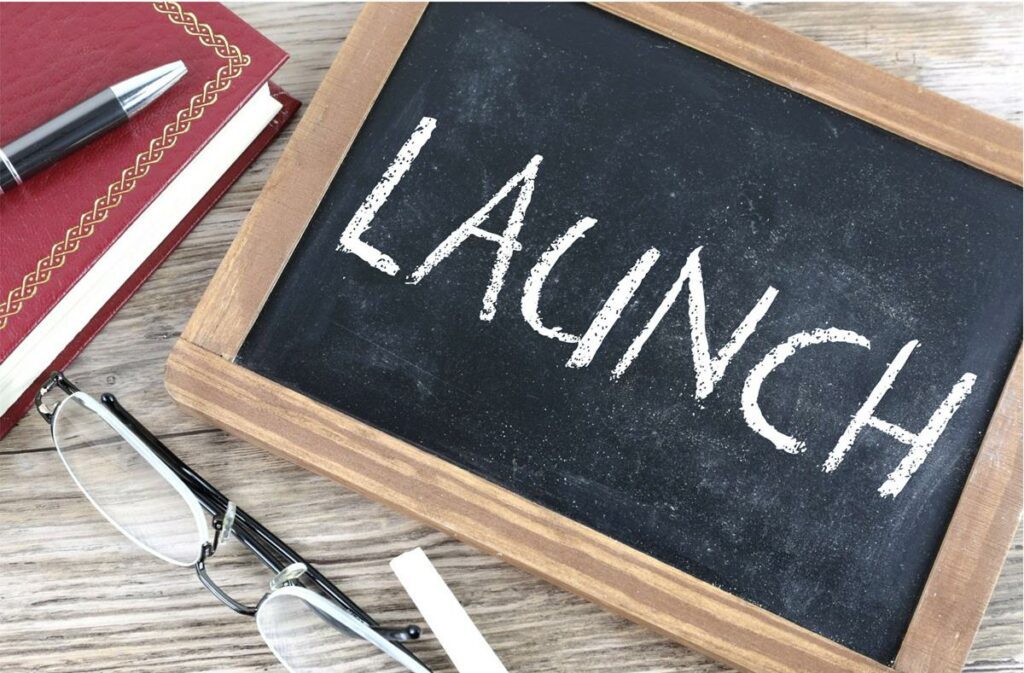





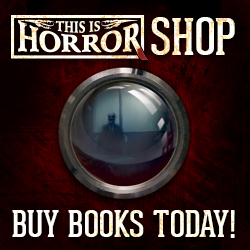

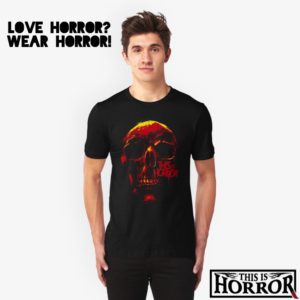
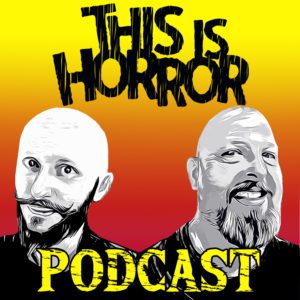
1 comment
Really liked this! It was informative and fun. And in truth, got right to the heart of the matter. Sometimes it’s not fun. You have to find your own rhythm and way of doing things.